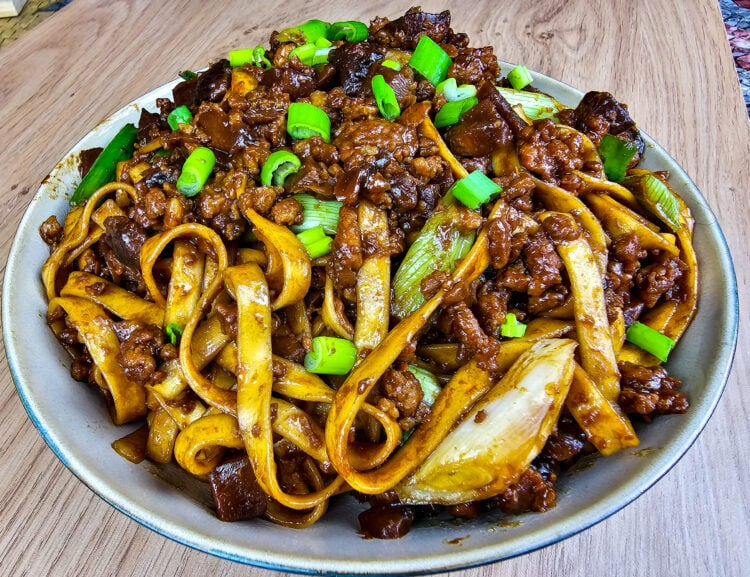What is Zha Jiang Mian?
Zhajiangmian is a traditional noodle dish from northern Chinese cuisine, and it’s a clear favorite among locals and food lovers around the world… or at least among those in the know, which I hope you’ll soon be part of!
The name literally means “noodles with fried sauce,” which hints at the dish’s rustic simplicity, but doesn’t quite capture the depth of flavor waiting for anyone lucky enough to try it. Seriously, this bean sauce is just de-li-cious.
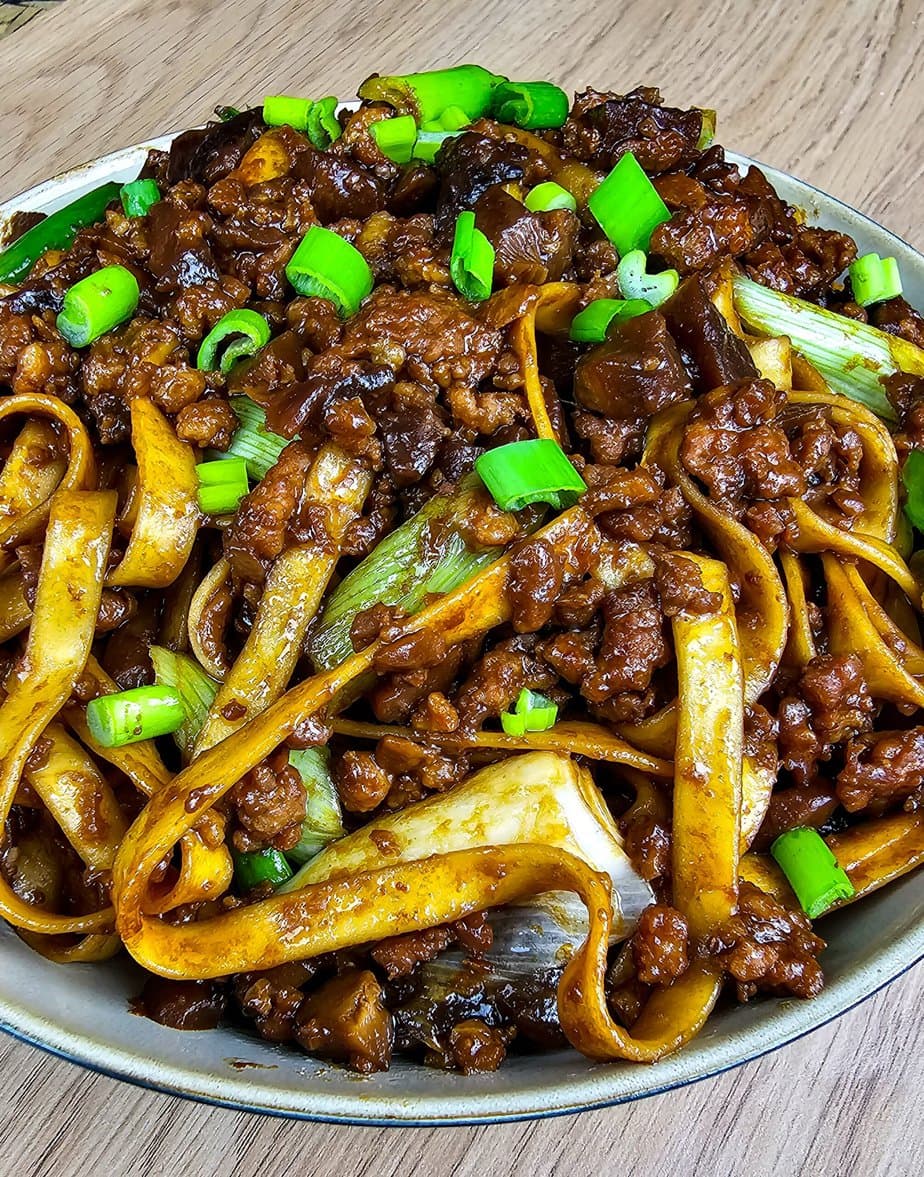
An Underrated Dish!
It’s both fascinating and a bit puzzling that despite its rich flavors and its status as a staple in northern Chinese cooking, Zhajiangmian remains relatively unknown outside its homeland.
This becomes even more striking when you see how Zhajiangmian has been adapted in other Asian cuisines, sometimes with even greater international success.
One especially notable example is Korea, where Zha Jiang Mian has been transformed into a beloved local dish called Jajangmyeon. Jajangmyeon uses a thicker, sweeter black sauce, offering a new twist on the traditional Zhajiangmian.
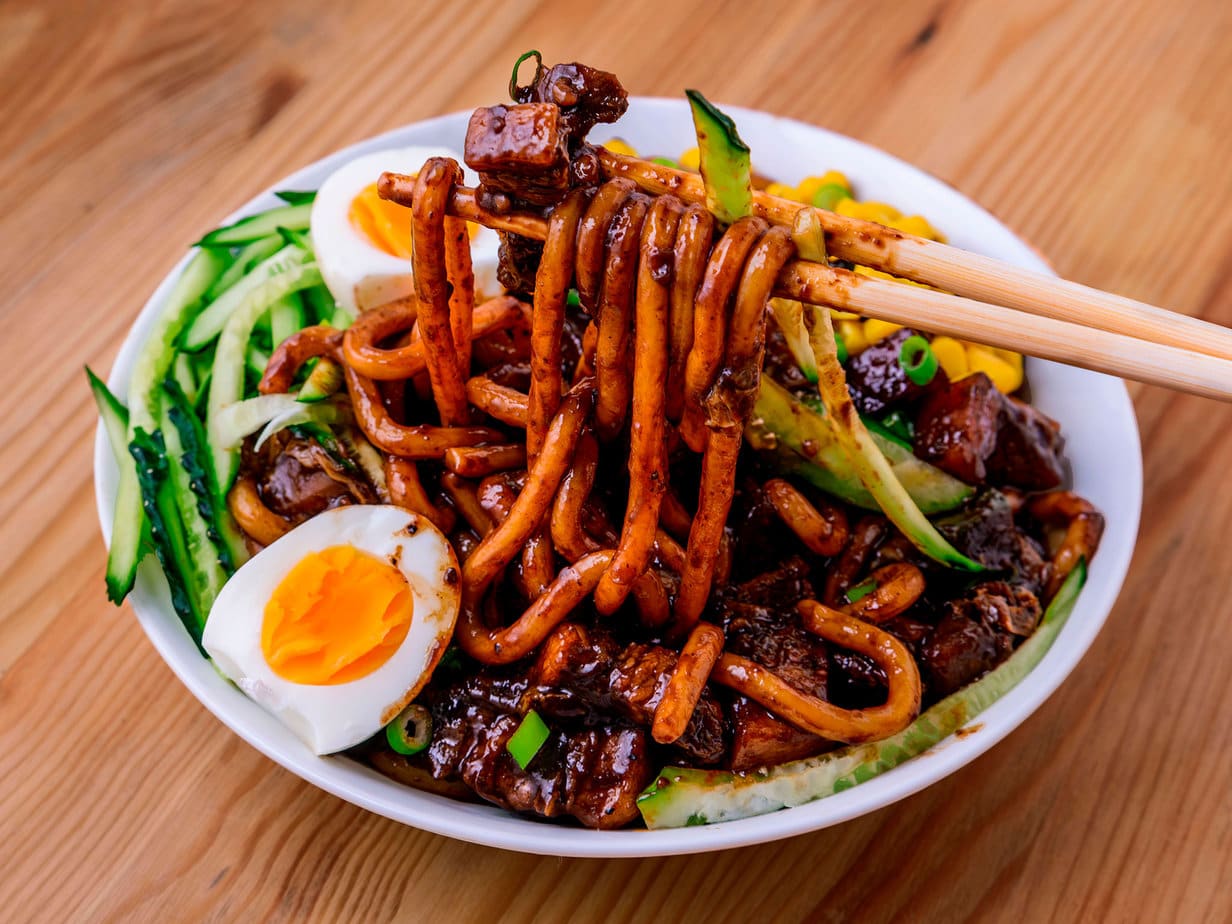
It’s managed to become a major part of Korean cuisine and has even made its mark on the international food scene, including in France.
It’s quite confusing—and honestly a bit unfair—that Zhajiangmian, the original predecessor of Jajangmyeon, hasn’t received the same recognition. It’s a bit like Jiaozi and Gyoza.
Despite its long history and unforgettable taste, Zha Jiang Mian seems to have been overshadowed by its Korean cousin in the eyes of international foodies.
Maybe it’s time to rethink that. Chinese cuisine has so much more to offer than what you usually find in Chinese restaurants abroad.
Zha Jiang Mian, with its rich sauce and thick noodles, deserves to be rediscovered and enjoyed by a wider audience. This dish embodies the history and culture of northern China and deserves to be as famous as any other Asian noodle dish.
The Elements of Zha Jiang Mian
The Noodles
At the heart of Zha Jiang Mian are the noodles. These hand-pulled wheat noodles are wide and thick, making them a signature part of the dish.
Their chewy, springy texture is the perfect match for the rich, savory sauce. Handmade noodles have a unique bite that store-bought noodles just can’t match.
Here, we’ll use store-bought noodles—because I won’t make you hand-pull them… at least not yet!
The Zhajiang Sauce
The real star of Zhajiangmian, though, is the sauce. Zhajiang sauce is usually made with ground meat (most often pork, but sometimes beef or lamb) that’s stir-fried until crispy.
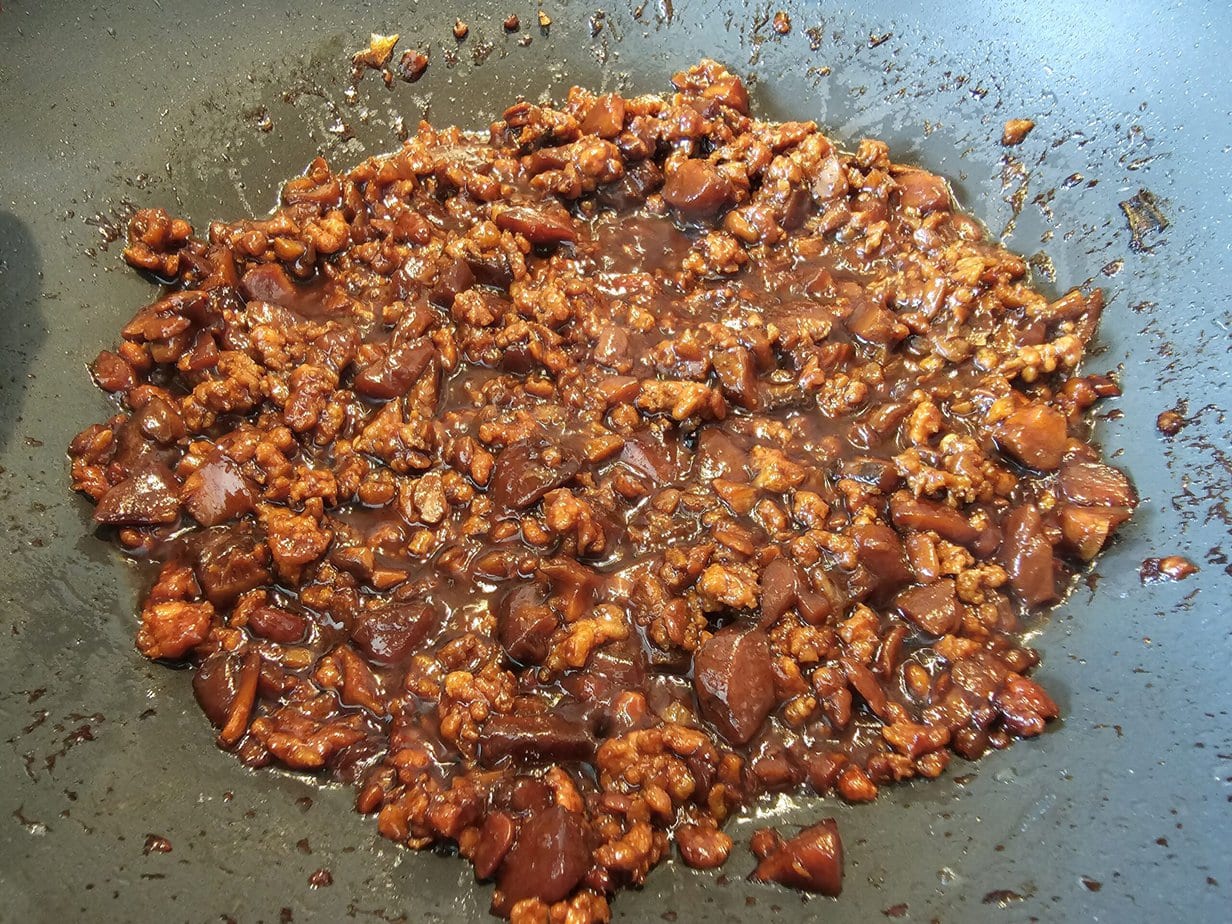
The meat is then mixed with a variety of sauces, mainly based on fermented soy, creating a sauce that’s deeply savory, salty, and just a little sweet. This sauce is the heart of the dish, bringing an umami punch that makes Zhajiangmian so satisfying.
Toppings for Zha Jiang Mian
To finish the dish, Zhajiangmian is often served with a variety of fresh, crunchy toppings.
These can include julienned cucumber, bean sprouts, radish, and sometimes tofu or eggs.
Key Ingredients for Zhajiangmian Noodles
- Dark soy sauce: This is a key ingredient that gives the sauce its signature dark color and a deep umami flavor. Dark soy sauce is thicker and less salty than light soy sauce, with a slightly sweet taste.
- Sweet bean sauce: It adds a subtle sweetness to the sauce, balancing out the salty flavors from the dark soy sauce and the fermented soybean paste. (Look for “sweet bean sauce” on the label; you can substitute with hoisin sauce.)
- Fermented soybean paste (dajiang): This is the heart of the Zhajiang sauce. The fermented paste brings a deeply savory, salty flavor that’s essential for authentic Zhajiang. You’ll find it at Asian supermarkets.
- Water: Used to thin the sauce and give it a smoother consistency. In this recipe, the water used to rehydrate the shiitake mushrooms is added for extra flavor.
- Dried shiitake mushrooms: Rehydrated and sliced, they’re added to the sauce for extra texture and umami. When rehydrating, make sure they’re fully covered with water. If needed, you can use fresh shiitake instead.
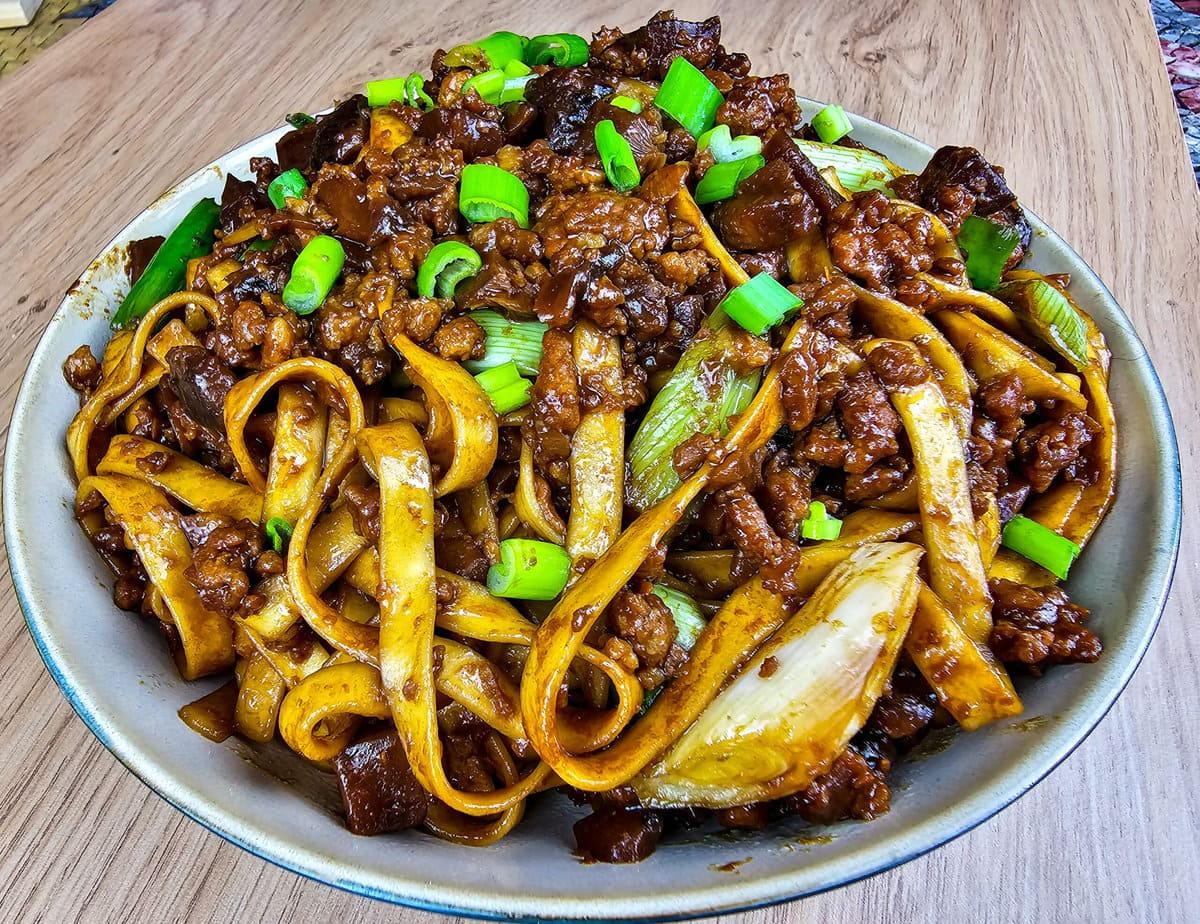
Equipment
- 1 Wok
Ingredients
- 250 g noodles (dry weight)
- 250 g ground pork
- 3 ginger, thinly sliced
- 5 cloves minced garlic
- 5 dried shiitake mushrooms
- 3 stalks green onions, cut into pieces
Marinade
- 0.5 teaspoon salt
- 2 teaspoons cornstarch
- 1 teaspoon neutral oil
- 2 pinches white pepper
- 1 pinch Chinese five-spice Optional, though our testers often preferred it.
Sauce
- 15 g dark soy sauce
- 2 tablespoons sweet bean sauce
- 3 tablespoons fermented soybean paste (dajiang)
- 250 ml water
Instructions
- Soak the mushrooms to rehydrate (shiitake can take up to 40 minutes in lukewarm water).5 dried shiitake mushrooms

- Marinate the pork with the marinade ingredients for 15 minutes.250 g ground pork, 0.5 teaspoon salt, 2 teaspoons cornstarch, 1 teaspoon neutral oil, 2 pinches white pepper, 1 pinch Chinese five-spice
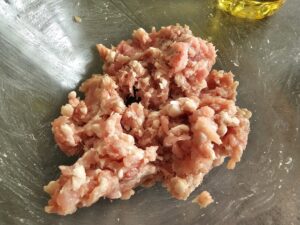
- Reserve the soaking liquid and slice the mushrooms.
- Heat a tablespoon of oil in your wok over medium heat.
- Add the marinated ground pork to the wok. Cook for 1 minute to brown.
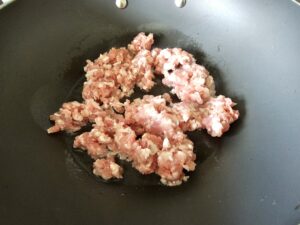
- Add the ginger and garlic. Let them brown together.3 ginger, thinly sliced, 5 cloves minced garlic
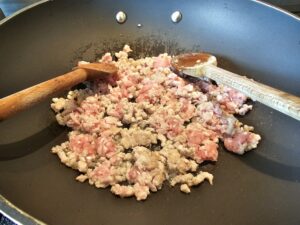
- Add the sliced shiitake mushrooms. Stir-fry for 2 to 3 minutes more.
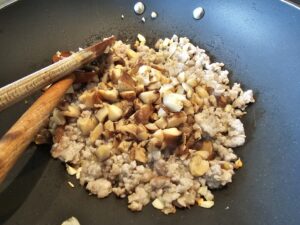
- Add the sauce ingredients (for the water, use the mushroom soaking liquid you reserved earlier), mixing well. Reduce the heat and cover the wok.15 g dark soy sauce, 2 tablespoons sweet bean sauce, 3 tablespoons fermented soybean paste (dajiang), 250 ml water
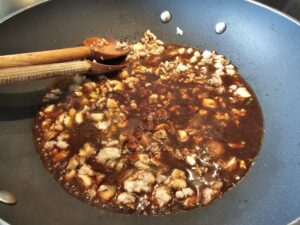
- Simmer the sauce for 15 to 20 minutes, stirring occasionally to prevent sticking.
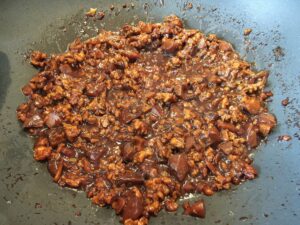
- Meanwhile, cook the noodles according to the package directions. Toss with the sauce.250 g noodles (dry weight)
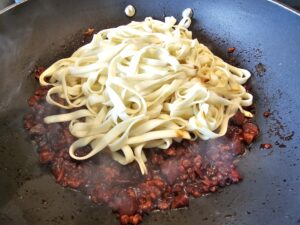
- Add the green onions, toss for 1 minute, then serve.3 stalks green onions, cut into pieces
